|
za fevral' 2004 goda.
 Seeing Double: Pythagoras
Seeing Double: Pythagoras
9.02.2004 | Lunnoe foto dnya
From Galileo in 1610 through the early 20th century, the only way to depict the lunar surface was by peering through a telescope and drawing what was seen. Lunar drawings were affected by each observer's telescope and eyepieces, seeing, visual acuity and artistic abilities.
 Crazy Quilt Imbrium
Crazy Quilt Imbrium
8.02.2004 | Lunnoe foto dnya
Are you lost looking at this image? Its our Moon, but as seen through very odd spectral glasses. To help get your bearings I've labeled some craters: A = Aristarchus, C = Copernicus, H = Harpalus, P = Plato; you can figure out the rest!
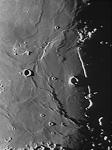 Crumpled Sheets of Lava
Crumpled Sheets of Lava
7.02.2004 | Lunnoe foto dnya
Crumpled sheets on a bed result from movement of a thin surface layer (the sheet) due to underlying motion (the restless sleeper). KC Pau's low sun view of eastern Mare Nubium looks like a messy lava sheet where most of the movement may have been vertical.
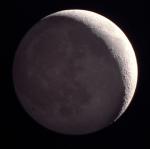 New and Old All Together
New and Old All Together
6.02.2004 | Lunnoe foto dnya
The crescent Moon is one of the glories of the solar system. The bright, sun-lit portion of the Moon doesn't yet overwhelm the Earth-lit, gibbous part. In Alan Friedman's remarkable composite rendition of this classic scene there is a strong three-dimensionality - you can almost feel the curvature of the surface.
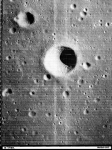 LO III
LO III
5.02.2004 | Lunnoe foto dnya
The trouble with NASA and space exploration is that its lingua franca is jargon and acronyms. "LO III" means nothing to hardly anyone except the spaceniks who remember or read of the remarkable robotic successes that preceded Apollo landings.
 Copernicus!
Copernicus!
4.02.2004 | Lunnoe foto dnya
Copernicus is the most important crater on the Moon. How can I call out any one as "most important," you ask? Let me modify the first sentence and you will probably agree: Copernicus is the most important crater on the Moon because of what it has taught us. Here are three lessons.
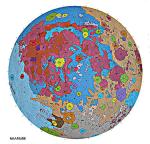 Lunar Bible
Lunar Bible
3.02.2004 | Lunnoe foto dnya
Although my collection of lunar books and maps currently includes 211 items, there are only three that I use constantly: Antonin Rukl's Lunar Atlas, Ralph Baldwin's The Face of the Moon and Don Wilhelms' Geologic History of the Moon.
 Brightness at Noon
Brightness at Noon
2.02.2004 | Lunnoe foto dnya
The brightness of local noon robs the familiar Moon of shadows. Instead of craters and hills we are left with reflectivity or albedo. The full Moon is strange, another world worthy of our exploration. Do you recognize this landscape?
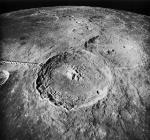 Theophilus
Theophilus
1.02.2004 | Lunnoe foto dnya
If Copernicus is the king of lunar craters, Theophilus is at least a duke, if not a prince. Theophilus is a 100 km wide, 4.4 km deep complex impact crater. This oblique Apollo 16 view clearly shows the trademark features of a complex crater: terraced walls, flat floor, and massive central peaks.

